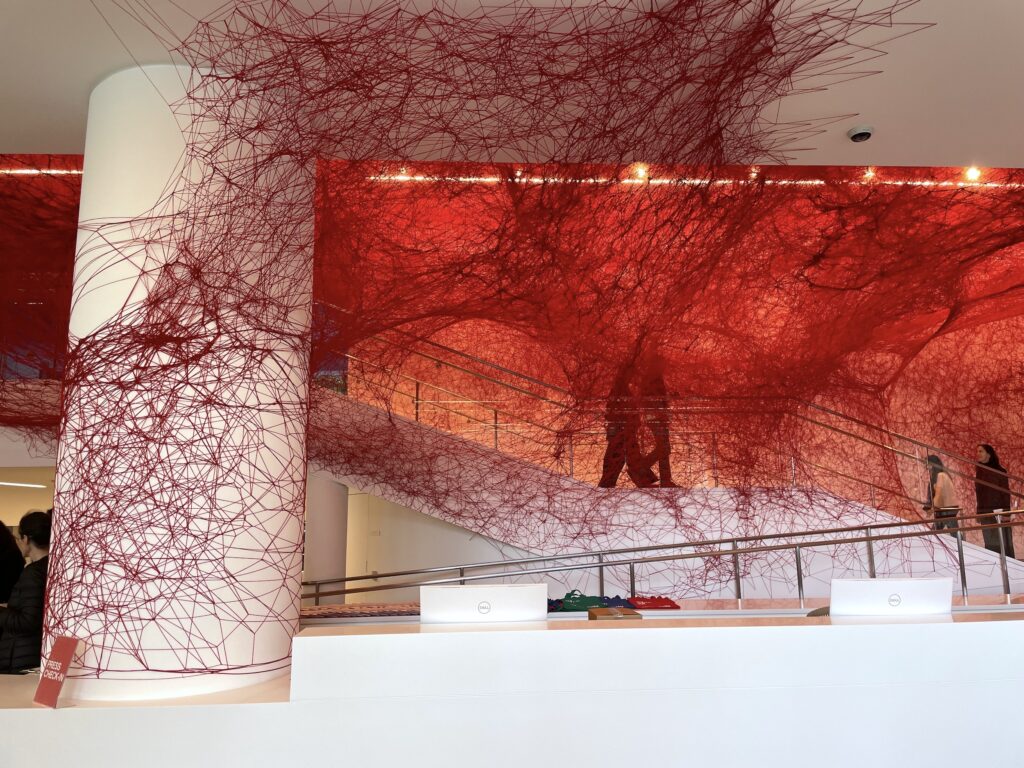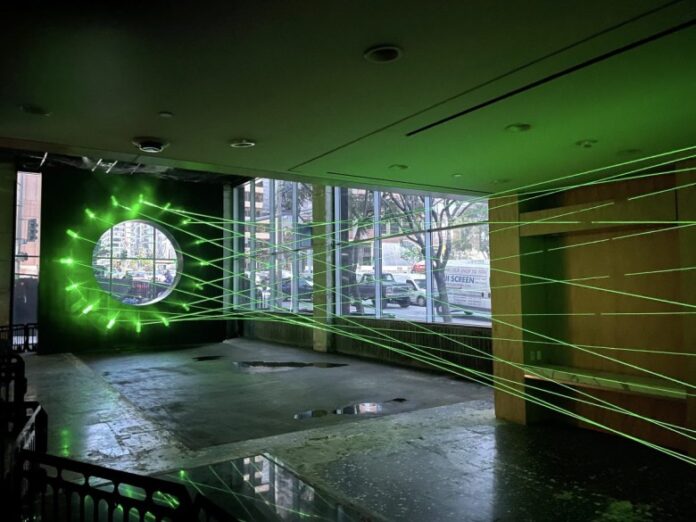After nearly a year of construction, the renovation of the former bank into a 5,600-square-foot gallery was completed in late March. The refurbished lobby of Hammer Museum has a larger information desk located closer to the center, but otherwise resembles the same airy rectangular architecture.
The museum is currently in the final stages of a gradual transformation that began over 20 years ago. These latest updates of Hammer Museum highlight opportunities for dramatic, large-scale works to really say to the surrounding Westwood neighborhood: Hey! We have art here.
Until the end of August, passers-by can peek through the windows of the lobby of Hammer Museum to see Chiharu Shiota’s grand staircase installation, a meticulously woven network of 800 pounds of red yarn that feels at once uterine, cancerous, and exciting.

Philbin’s longtime goal was to raise the profile of the Hammer Museum.
The Hammer Museum is an extension of the 16-story Occidental Petroleum corporate tower once chaired by oil tycoon Armand Hammer. In 1990, to house the Impressionist and Old Master Hammer collection, architect Edward Larrabee Barnes designed a nearly windowless block of black and white marble, accessible to this day through the ground floor of the tower. Its architecture followed a centuries-old approach to museums as “temples,” in Philbin’s words, i.e. rare places to contemplate art.
In 1994, four years after Hammer’s death, UCLA took over his collection. In 2000, Maltzan developed the master plan. According to this plan, the building was rethought as a “city living room”. This included the addition of a theater and café in 2006, the completion of an open-air solar court in 2012, and a 60 percent increase in total exhibition space at short notice.
Heralded as “the end of two decades of transformation,” the reinvention of the Hammer Museum at the street level could be better described as the beginning of the end. What remains is the conversion of the former City National Bank building into a new gallery. This expansion was made possible by the purchase of the entire building by UCLA for $92.5 million in 2015.
During the pandemic, funds for decorating and connecting space to the lobby of the Hammer were used to prevent layoffs. Transparent lobbies have become the prevailing trend in museum redevelopment over the past decade. There is an idea that a light, airy entrance would be less intimidating to the general public and therefore let more people through the door.
But despite the Hammer museum’s claim of a new “dramatic presence throughout the city block,” passing pedestrians and motorists are unlikely to notice much of a difference. The plaque over the door still says “Linda and Stuart Resnick Cultural Center” instead of “museum.” The entire building is now named after the owners of brands such as Fiji Water and POM Wonderful. Their $30 million donation in 2018 really helped get construction going.
All this suggests that the Hammer museum is still very much like part of an office building. Above it rise 15 floors of glass and marble. But following the goals they set for the museum 20 years ago, Philbin and Maltzan have pretty much achieved what they set out to do.

























